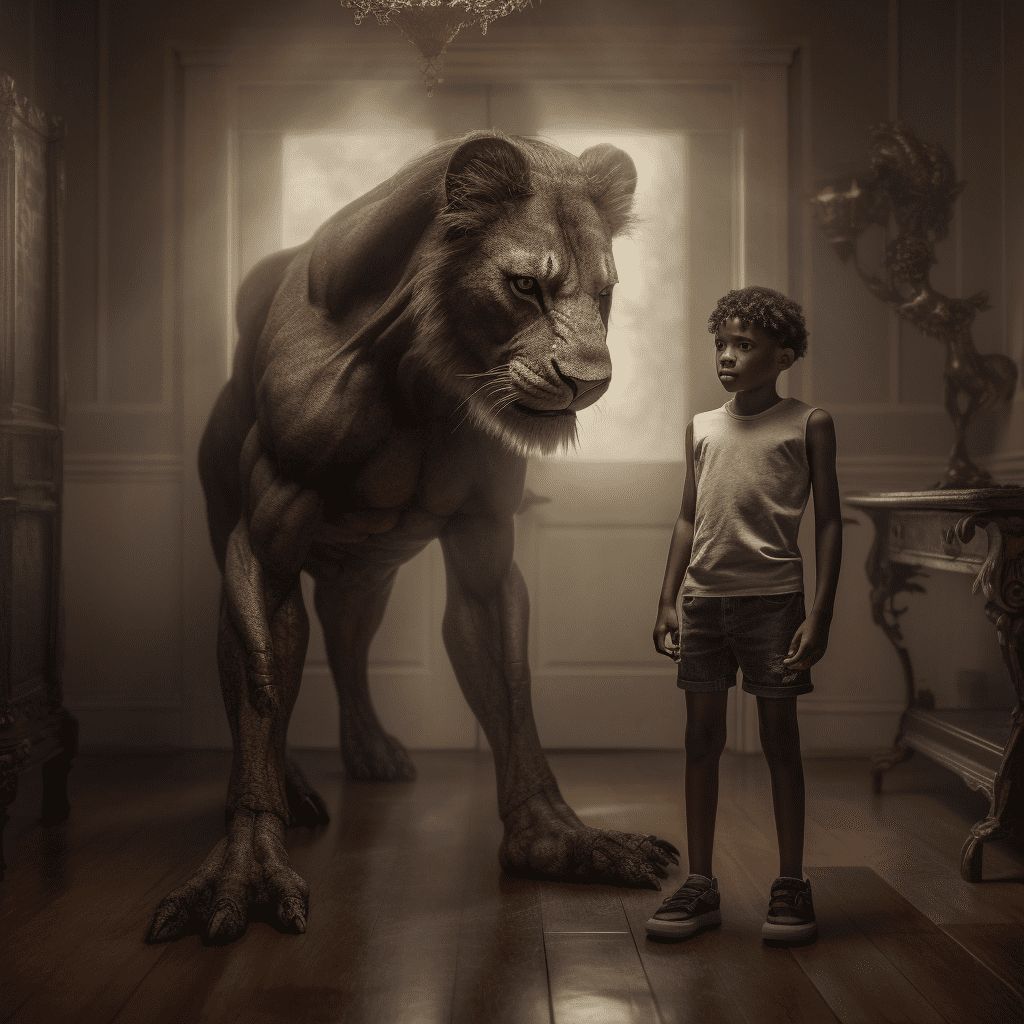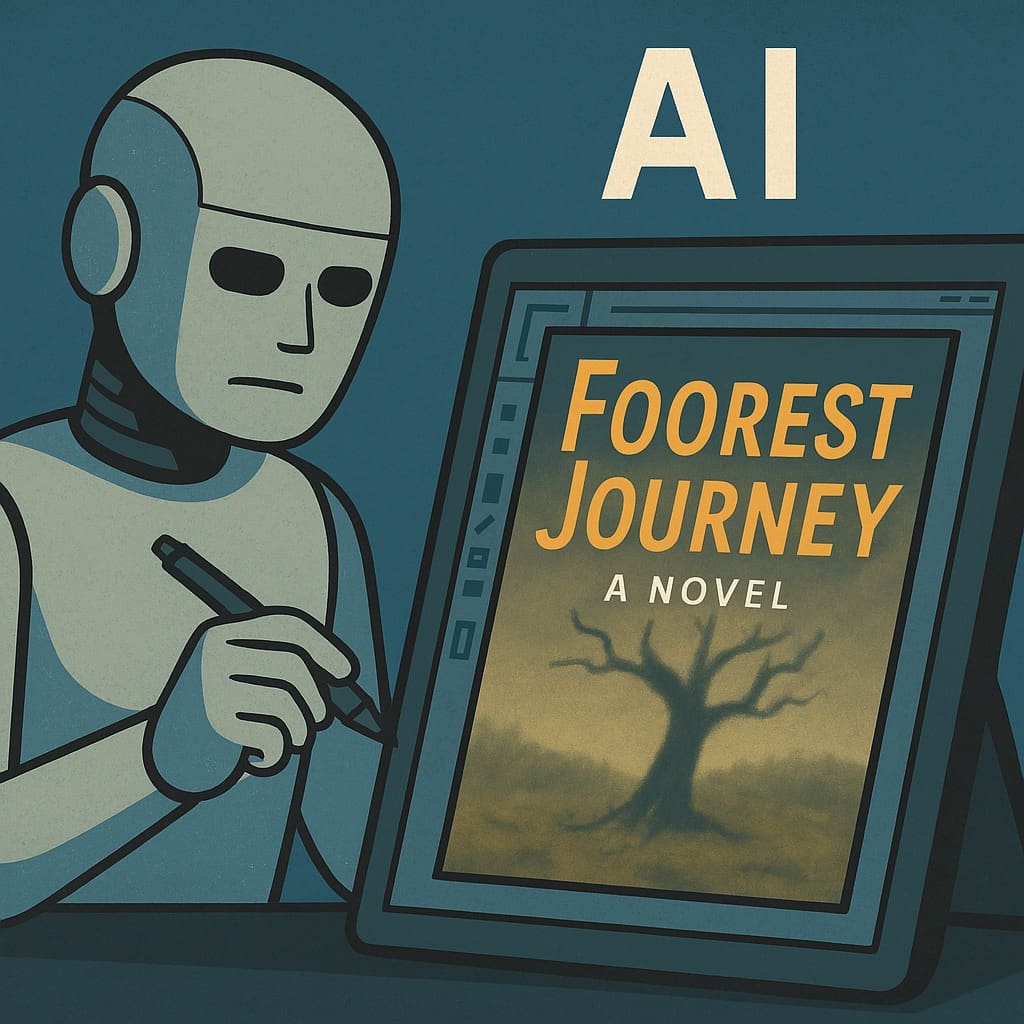Remember that time you spent an entire day tracking an antelope across the Savannah, tiring it out until it collapsed from heat exhaustion, ensuring you and your family would eat that night?
If you do remember that time, I have a lot of questions. Most of us don’t, because humans have spent millennia working on tools and technologies that ensure we don’t have to. We now find ourselves at a point where our major prey – pizzas – can neither attack nor outrun us, for which I am eternally grateful.
I am a firm believer that tools and technologies make our lives better. This optimism extends to a new technology that some believe will not just take my job and business, but may render my entire profession obsolete: generative AI.
I don’t believe the doomsayers. I believe that generative AI enhances what we do at Damonza. I believe that it’s just another (increasingly powerful) tool in our kit. And I believe that ‘book cover designer’ will continue to be a valued profession for as long as there are books to cover.
Generative AI is not a designer
As Arthur C. Clarke famously said, “Any sufficiently advanced technology is indistinguishable from magic.”
When generative AI exploded in 2022 and evolved faster than anyone expected, it was easy to believe it would replace humans wholesale. But the truth is more nuanced — especially in design.
Most authors who’ve tried to create their own AI covers have discovered this the hard way. The results often look “fine,” but not right. Off-genre, unbalanced, lifeless. And don’t even get me started on the fonts.
The issue is twofold. First, prompting AI effectively is a skill in itself. Second, book cover design is far more than just creating an image. It’s a layered process involving genre knowledge, composition, hierarchy, psychology, and sales strategy — all things AI doesn’t grasp.
At Damonza, every cover is crafted from deep research, careful reference, and hands-on execution. We weigh what grabs a browser’s attention, what converts that attention into a click, and what signals quality and trust to your reader. AI doesn’t know how to do that. But it can help us do it better.
Generative AI is a cover design power tool
We didn’t realize it until recently, but we’d been working with screwdrivers this whole time. Generative AI is our power drill. Not something we use on every project — but when we do, it speeds things up and makes outcomes better.
Yes, there’s a learning curve. And no, we’re not handing off full covers to AI. But used right, AI helps us deliver more creative, more consistent, and more original designs — particularly in genres that demand it.
How generative AI fits into the design process
We don’t use AI for ideation. That comes from our brains. But when we need something specific — a creature, a costume, a scene that stock can’t provide — we may generate an element using AI.
It’s important to note: we never generate full covers with AI. We use it for **individual elements only** — which are then modified, stylized, composited, and integrated into the final design by a human designer. Typography, layout, and balance are all handled by us.
AI often takes more time than stock when used properly — but the quality is often worth it. We’ve even eliminated our character creation fee because AI makes that process more accessible and flexible than ever before.
How AI complements traditional design techniques
Let’s say you’ve written a book about a chimera with the legs of a frog, torso of a horse, and head of a lion. Before AI, we’d have to stitch that together with whatever stock we could find and hope the lighting matched. Now? We can actually make it.
Or maybe it’s a superhero you’ve invented: Captain Astounding. You know what he looks like, but no stock image is quite right. That’s where AI shines:
From historical environments to futuristic spaceports, AI lets us build the exact visual we need — then refine it with traditional techniques until it fits the final design seamlessly.
Teamwork makes the dream work
We don’t compete with AI any more than a carpenter competes with their saw. We work with AI — and we’ve never felt more empowered as designers.
Photoshop now includes generative tools as standard. It’s in the toolbox, whether you opt in or not. And we use it with the same care we use with every other tool — to serve the design, not shortcut it.
Of course, we know not everyone’s comfortable with AI yet. That’s why we offer an opt-out when you place your order — and we’re fully transparent about how we use it. You can read our full Generative AI Image Policy here.
In the next article, we’ll explore exactly what those concerns are — and how to overcome them. Click here to read that next.








2 Responses